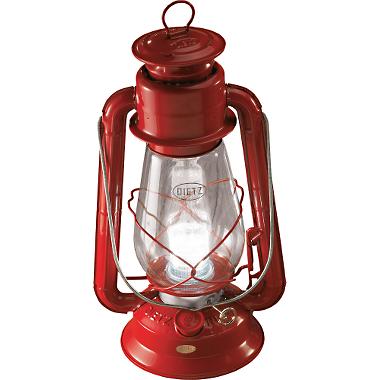Clean Train Station Services
Millions of passengers travel on Indian Railways network everyday. Together, they generate tonnes & tonnes of debris nationwide in trains & railway stations. An average household accommodating 3 to 4 members of the family who have ownership of their household requires at least 2 times cleaning & mopping attention in a day. An average passenger carrying coach accommodates 60 to 70 people, runs 24 hours a day and no sense of ownership, litters the coach at its will. A passenger carrying coach is like a moving house carrying people and thus requires not only one initial thorough cleaning before departure but also during the journey on-board throughout its round trip. This behaviour of our fellow passengers drives our “Facility Management” team to engage themselves in fighting this internal war every day. They always come out winning.
What Railways must do to enhance its public image exponentially?
General Comments on Budget:
Hon. Minister of Railways Ms Mamta Banerjee has clearly defined her objectives for next 5 years. Being a socio centric individual with pro hygienic sense, she has declared an overall passenger focus budget in which there is enough for every stratum of society and their general health being. She is well aware how IR can help in social & economic development of the country. She is also aware of the fact that IR caters for 90% of the population of the country and thus it is the nervous system of the transport infrastructure.
An Overview & Challenges for Railway:
Indian Railways is facing ever-increasing pressure to deliver passenger services more efficiently and effectively. Globalization has changed the way businesses are done today. Open aviation policy and roadways infrastructure have already triggered a healthy competition to Indian Railways that was unheard for decades. Millions of passengers (Customer) experience the amenity services in 2500 trains daily on Indian Railways network corresponding to millions of moments of truth (service encounters) between Railways & Passengers. These are gigantic service needs, which ultimately lead to special attention towards maintenance and improvement in service quality. The traditional approach in providing passenger services have not yielded any satisfactory results in past and there has been obvious noises in parliament on complaints. One of the most critical areas has been overall housekeeping in the train journeys. MR being highly conscious about health & hygiene of the society has been point right in laying increased emphasis in its current hygiene standards. IR is now looking outward to competent and professional service providers for its non-core activities.
Train Housekeeping: Millions of passengers travel daily in captivity for multiple no. of hours and experience a mega brand called Indian railways. Housekeeping standard in trains is one of the most neglected areas and is very vast in nature, comprising of services that directly affect captive passenger’s behaviour throughout journey. Managing these services require an uphill task and monumental capabilities, as services are perishable items. Two of the most significant components of on-board passenger services have been cleaning and linen services. These services not only affect passengers directly but also result in forming perception of overall service quality. Currently these two important components of train housekeeping are very primitive in nature and lacks physical evidence, service standards and serious emphasis from railway.
The linen services are very rudimentary and mostly delivered through multiple service providers in every station. The basic linen service quality remains to be a million doubts in passengers mind. Even some passengers refrain from using the linen served in trains. Railway’s dream is to provide clean & sanitized toilets to passengers throughout the journey. In order to fully realize its dream, cleaning services need to be extended to passengers not only at multiple stations but also throughout their journey. The price paid by passengers for linen service is adequate enough to justify level of quality but at present this is managed by petty type contracting. Globally the number of times linen served unwashed is increasing day by day and since multiple agencies get involved in complete supply chain, there is no accountability of service delivery. This fragmented supply chain not only put opportunities for several fail points but also bring greater difficulty in managing timely response. Issues widely affecting the travelling passengers of all sections all railways seems simple to talk but very difficult to realize.
Areas of Concern: Every good practice adopted by Railways all over its 16 zones loses its effectiveness in implementation and dies down prematurely due to:
Historical data & coaching department:
Historically every station was provided with toilet facility and safaiwallas right from its inception. Even coaches were cleaned and disinfected by cyno-gasing (crude methods) at the time of the “Great Indian Peninsula Railway” (GIPR). By way of travelling safaiwallas on-board hygiene requirements were met even in the last century. Over the years this has lost sight due to increased traffic demands. The total no. of coaches plying daily is approx. 40000. In order to have sanitized toilets throughout the journey, Railway will have to deploy additional 10000 safaiwallas to meet up the increased demand. The characteristics of passengers is such that they show no sense of civic behaviour as 70% of the total travelling population belongs to rural background-relevant for PF & coaches. In the modern time, chemical cleaning etc has been introduced, so also CTS (Clean Train Station) concept was introduced in 2003 at Ratlam. This has brought success to a miniscule level as ministry decided to set up only 50 stations throughout railway network in India whereas there are more than 9000+ stations in Indian Railway network. Although this scheme of CTS has been found to be a bit successful and was even claimed by media as one of the best 57 things happened in India in equal no. of Independence years. There have been lot of efforts made by Railways by way of “Pay & Use Toilets” in the stations, outsourcing of cleanliness in the platforms through professional agencies, mechanized cleaning in the depots during the primary maintenance and to some extent providing some on-board safaiwallas. Some of the amenities that are very critical from passengers’ perspective are:
What is required by Railway to propagate desired degree of awareness? Customer (Passenger) Education: With H1N1 pandemic looming large in India, its contagiousness becomes the biggest ever area of concern. Indian Railways who transports almost entire population of planet twice and if WHO has to be believed, IR may become the biggest carrier of this virus from human to human contact. It is then an SOS call of the highest importance that hygiene & cleanliness of passenger carrying coaches gets the No.1 priority in the key result area of ministry of railways. An uninterrupted continued large-scale campaign is required to at least propagate the basic civic sense and the behaviour on-board to minimize the littering. A social awareness campaign towards civic sense would be essentially required which will have to be necessarily done at very large-scale level on following aspects:
Introduction of Bio-Toilets:
The issue has environmentalists & Supreme Court commenting on urgent necessity. Railways have evolved various techniques to deal with this menace but with limited success.
Whatever may the type of toilets be provided, it would need regular upkeep as it is being a public nature and is used at large inside the train by people with varying habits and cultures. Intermittent cleaning as being done in CTS may not be of any use. The best solution to tackle this problem would be to provide right type of disposal system in toilets and regular on-board cleaning (Janitorial) services which could also be available on demand if immediate necessity arises. Such a system will take care of cleanliness in the toilets while the train is on run continuously. 1 person for 3 coaches would suffice. No solution would be sufficient unless there is a mutual cooperation between service provider and the user.
Criticism on the efforts made by Railways:
Suggestions:
|





